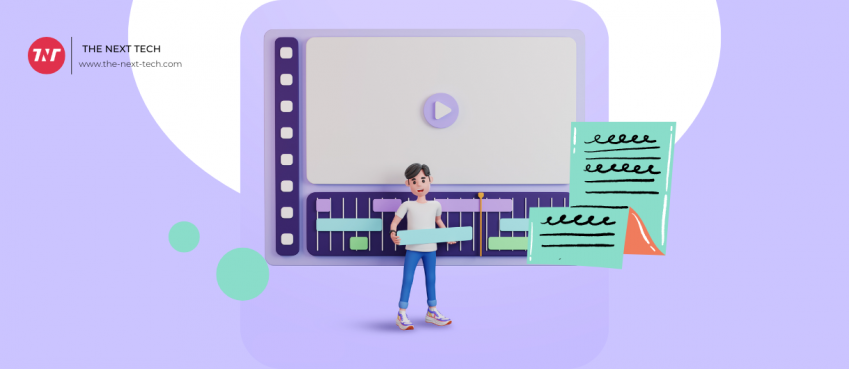
This article will explain how AR and VR are being used by the manufacturing industry to improve its operations and overcome many challenges.
Industry 4.0 was introduced with the advent of the fourth industrial revolution. It refers to the digital transformation of manufacturing industries through advanced technology such as robotics, cybersecurity, and the Internet of Things. It’s also known as smart factories.
AR and VR, two of the most advanced technologies available today, are creating a bridge between manufacturing’s physical and virtual worlds by forming a cyber-physical system.
Virtual reality and Augmented Reality have revolutionized manufacturing, from the design of the product to its delivery in real life. IDC predicts that the world’s spending on virtual and augment reality will double annually after 2021.
Below are some examples of AR/VR’s potential departure from the old era of manufacturing.
How AR & VR Transforming the Manufacturing Sector
Production Acceleration
With the right data, AR and VR can be combined to speed up production. This can streamline workplace processes by allowing teams to quickly and thoroughly analyze their designs. They can also fail quickly in their trials and refine the designs again at a rapid pace.
Combining AR and VR with artificial intelligence allows for the creation of closed-loop data models which can be used to feed the system automatically in the event of an error.
This can reduce the production time. With the aid of a virtual interface, even the most novice person can operate the machines and assemble the products quickly.
Also read: What Is Beta Character AI? Comprehensive Review + FAQs
Cost-Effectiveness
Many dollars are spent on product design, amendments, and problem fixing. VR and AR allow for the reduction of manufacturing and operational costs.
They run simulations that examine every corner and part of the product, and sometimes even the entire manufacturing process. These technologies will yield incredible results that will repay the investment.
Rapid Prototyping
The use of VR and AR can improve existing service and product prototypes. Planning and testing are much easier with virtual models than with real-world products.
Automotive manufacturers have already begun to use virtual reality to cut down the time it takes to design the first prototype and launch the actual model. This is a great example of how virtual reality can be used to speed up the process.
Sometimes, it can be difficult to read the manual. So the manufacturer assumes that the manufacturer will take care of the next step. He might be wrong and end up ruining the entire plan.
One employee’s mistake could mean that the entire process must be restarted by the manufacturers.
This is where the virtual layer can be applied to “reality” in many types of manufacturing and industry environments using AR/VR glasses/viewers. It will prevent human error.
Also read: Top 10 Websites And Apps Like Thumbtack | Hire Best Local Pros With Thumbtack Alternatives
Improved Interaction between Manufacturers
Virtual reality and AR allow for network-based communication between manufacturers, products, and production means.
These can be connected virtually in the real life. Augmented reality allows engineers to monitor and guide the manufacturers remotely without having to be physically present on the spot.
If they have the right information, people in factory work, service and logistics jobs may be able to do better. They are able to use their brains to manipulate and then implement the information with their hands.
Also read: Top 10 IT Companies In The World By Market Cap
Improved Customer Experience
AR/VR models can be customized to meet the needs of customers and provide complete quality control. VR allows customers to see the product in 360-degree content.
Smart cities and smart cars, for example, make use of virtual and augmented reality to allow customers to visualize and experience the entire infrastructure using real-time data. These manufacturing projects are no longer restricted by geographic location.
Also read: What Is Forex Trade? 5 Untold Forex Trading Benefits + Expert Tips For Higher Forex Profit
Save Human Resources
The industry is dependent on human labor. Industries require manpower, both mentally and physically.
This demand has increased with the rise of industries. The lack of a skilled labor force is evident. Workers’ skills can be improved by practicing. Specialists must give up their jobs and learn from the new employees.
AR makes it possible to train new employees without the need for a specialist. This also helps with the man labor shortage. They can be guided using already stored instructions on a virtual layer that has been created by adjusting the real world to meet the labor’s requirements.
Also read: What Is xResolver? How To Use xResolver For Xbox? [Top 3 Alternatives + FAQs]
Workplace safety
The manufacturing industry is more prone to injuries and hazards. Virtual reality allows manufacturers to analyze their decisions in a 3D virtual environment before they are implemented in the real world.
This ensures workplace safety. VR and AR can be used to help workers avoid machine-related injuries in factories.
Top 10 News
-
01
[10 BEST] AI Influencer Generator Apps Trending Right Now
Monday March 17, 2025
-
02
The 10 Best Companies Providing Electric Fencing For Busines...
Tuesday March 11, 2025
-
03
Top 10 Social Security Fairness Act Benefits In 2025
Wednesday March 5, 2025
-
04
Top 10 AI Infrastructure Companies In The World
Tuesday February 11, 2025
-
05
What Are Top 10 Blood Thinners To Minimize Heart Disease?
Wednesday January 22, 2025
-
06
10 Top-Rated AI Hugging Video Generator (Turn Images Into Ki...
Monday December 23, 2024
-
07
10 Top-Rated Face Swap AI Tools (Swap Photo & Video Ins...
Friday December 20, 2024
-
08
10 Exciting iPhone 16 Features You Can Try Right Now
Tuesday November 19, 2024
-
09
10 Best Anatomy Apps For Physiologist Beginners
Tuesday November 12, 2024
-
10
Top 10 Websites And Apps Like Thumbtack
Tuesday November 5, 2024







